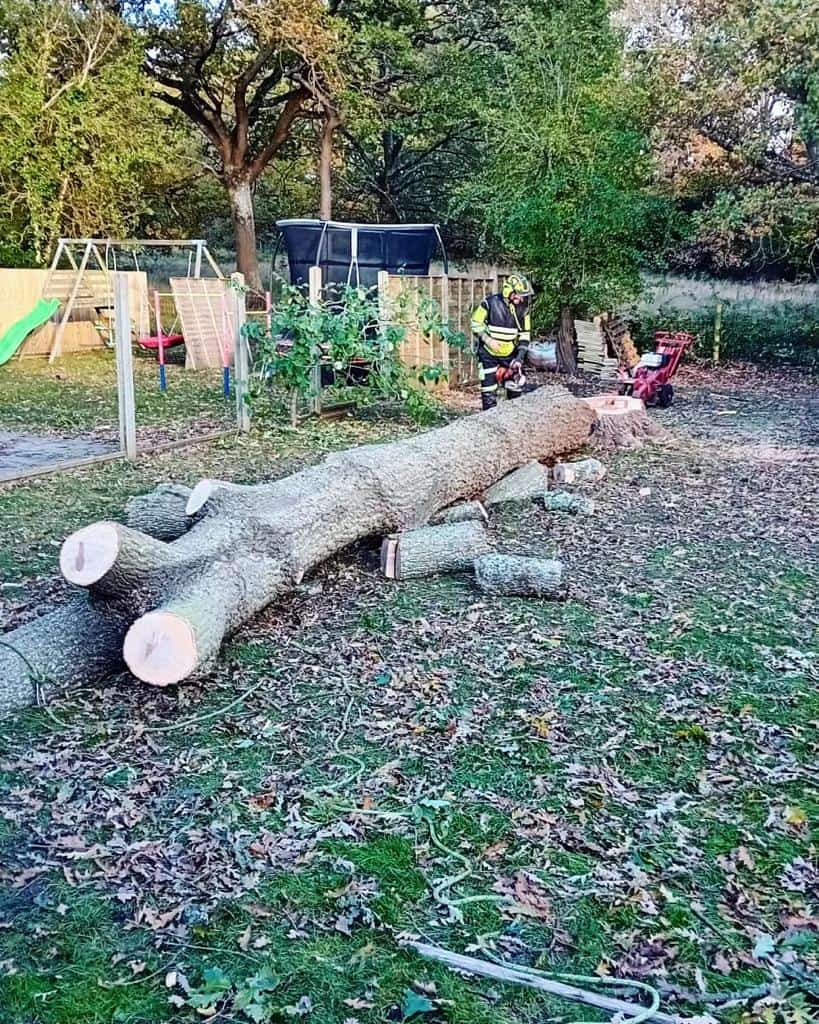Introduction
Crown reduction is a tree surgery technique that involves the careful and controlled reduction of a tree’s canopy. It is a common practice used to improve the health and appearance of trees, as well as reduce risks posed by overgrown branches. However, despite its widespread use, there are several misconceptions surrounding crown reduction that can lead to misunderstandings about its benefits and the process itself.
If you’re considering crown reduction for a tree on your property in Hook, Hampshire, it’s essential to separate fact from fiction. In this blog post, we will address some of the most common myths about crown reduction and clarify why it’s an effective and valuable tree care service when carried out by experienced professionals.
1. Crown Reduction Will Kill My Tree
Debunking the Myth of Tree Death
One of the most widespread misconceptions about crown reduction is that it can lead to the death of the tree. Some people believe that cutting back a significant portion of the canopy will harm the tree irreparably. However, this is not true when the procedure is done correctly.
When performed by an experienced tree surgeon, crown reduction is a safe and effective method of tree care. It helps maintain the overall health of the tree by removing dead or weak branches, improving airflow, and allowing more sunlight to reach the remaining foliage. Proper crown reduction helps the tree stay strong, healthy, and stable, rather than weakening it.
It’s important to note that crown reduction should be performed according to the tree’s natural growth patterns and should not remove more than 30-40% of the tree’s overall canopy. Over-reduction or improper techniques can indeed stress the tree, but a well-executed crown reduction enhances its vitality.
2. Crown Reduction is the Same as Tree Topping
Understanding the Key Differences
Many people confuse crown reduction with tree topping. While both involve cutting back branches, the two are very different in terms of technique and impact on the tree.
Tree topping is an outdated and harmful practice where large portions of the canopy are cut indiscriminately, often leading to severe damage, decay, or the development of weak growth. This can cause the tree to become unstable and potentially dangerous.
On the other hand, crown reduction is a more refined process that involves reducing the overall size of the canopy in a way that preserves the tree’s natural shape and structural integrity. This method focuses on selective pruning and cutting back only the branches that are overgrown or unhealthy, rather than cutting off large sections indiscriminately.
Crown reduction, when done by a skilled tree surgeon, ensures that the tree’s overall health and safety are maintained, unlike tree topping, which can cause long-term damage.
3. Crown Reduction is Only for Old or Dying Trees
Trees of All Ages Benefit from Crown Reduction
Another common misconception is that crown reduction is only necessary for older or dying trees. While it is true that older trees may benefit from crown reduction to prevent damage or improve stability, crown reduction can be beneficial to trees of all ages.
For young or actively growing trees, crown reduction can help shape the tree, promoting healthy growth and encouraging strong branch development. By removing weak or crossing branches early, crown reduction helps prevent future problems such as weak or asymmetrical growth, which could require more drastic measures later in the tree’s life.
Crown reduction is also useful for maintaining trees in urban or residential areas where space may be limited, and overgrown branches pose a risk to buildings, power lines, or other structures. In these cases, crown reduction is a proactive approach to tree care, ensuring that the tree remains healthy and manageable.
4. Crown Reduction Will Prevent Future Growth
How Crown Reduction Encourages Healthy Regrowth
Some people believe that crown reduction will prevent a tree from growing further, but this is a misconception. In fact, crown reduction encourages the tree to regrow in a healthy and controlled manner. After crown reduction, the tree will put out new shoots, which will grow in a more balanced and structured way, providing a fuller, denser canopy that is less likely to cause problems in the future.
Proper crown reduction should stimulate the tree’s natural regrowth, rather than stunt it. By carefully reducing the canopy and removing any dead or unhealthy wood, the tree is allowed to focus its energy on producing strong, healthy new growth.
5. Crown Reduction is Always the Best Solution for Overgrown Trees
Understanding When to Choose Crown Reduction
While crown reduction is an effective solution for managing overgrown trees, it’s not always the best option for every situation. Some trees may require other forms of care, such as crown thinning, crown lifting, or even complete removal, depending on the tree’s condition, location, and the underlying issues.
For example, if a tree has a significant amount of dead or diseased wood, crown thinning (the selective removal of branches to allow more light and air to pass through) may be a more appropriate solution. If a tree is severely damaged or structurally unstable, it may need to be removed altogether for safety reasons.
It’s essential to consult with a professional tree surgeon who can assess the tree’s condition and recommend the most appropriate solution based on the specific needs of the tree.
Conclusion
Crown reduction is an effective and valuable tree surgery technique that, when done correctly, can improve the health, structure, and safety of your trees. However, it’s important to separate the facts from the misconceptions surrounding this practice. By choosing a qualified and experienced tree surgeon, you can ensure that crown reduction will provide the desired benefits without causing harm to your trees.
If you’re in Hook, Hampshire, and need expert advice on crown reduction or other tree care services, NS Tree Surgery Hook is here to help. Our team of skilled tree surgeons can assess your trees and provide tailored solutions to ensure their long-term health and safety. Contact us today to schedule a consultation and keep your trees in optimal condition.
Call us on: 01256 577 998
Click here to find out more about NS Tree Surgery Hook
Click here to complete our contact form and see how we can help with your tree needs.

